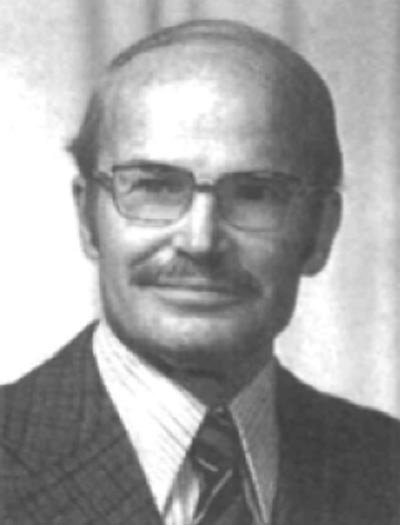
(1915-2014)
Nelson Nix was born on July 23, 1915, in Edmonton, Alberta, where he was educated (at Oliver Public School, Victoria High School, and the University of Alberta) and, except for the war years, spent virtually all of his professional career. Well known in the city as a physician and anaesthetist, he was also respected as a citizen for his contributions to community activities.
Dr Nix's career in anaesthesia began when he graduated in May 1941, and became "the anaesthetist" for the Alberta Government Travelling Clinic. From May to August 1941 he gave no fewer than 532 anaesthetics where the province lacked hospitals, using only ethyl chloride and ether given by a hand-operated ether-air vaporiser and suction pump. This experience demonstrated to him the need for formal training, which he took at the Hamilton General Hospital. After enrolling in the Royal Canadian Army Medical Corps he served as an anaesthetist in the military hospital in Halifax.
In 1944 Nix was ordered to Europe. He welcomed the opportunity of serving in some of the best military hospitals, and learning from established and experienced anaesthetists. (As an aside, the long-term impact on training in anaesthesia in Canada by anaesthetists who had served in the armed forces must be enormous.) Nix soon served as a senior anaesthetist himself: at No.22 Canadian General Hospital in Haslemere in England, at No.2 Casualty Clearing Station on the Continent, and then at No.24 Canadian General Hospital back in England. He was demobilised in 1946, with the rank of Major.
Still only 30, Dr Nix returned to Canada early in 1946 to take up full-time anaesthesia back home. In the next 40 years he worked at the Royal Alexandra Hospital (from 1946 to 1983, and as Head from 1963), the Misericordia Hospital (1946-1956), the Charles Camsell Hospital (1946-1956) the Edmonton General Hospital (1947-1950), and the Aberhart Memorial Hospital (1948-1960). He practised in an era of many highly significant innovations. Thiopentone and curare had just been introduced, succinylcholine and other muscle relaxants and then a train of volatile inhalational agents followed. The post-anaesthesia recovery room and the intensive care unit became everyday parts of the anaesthetist's territory, and the use of ventilators and invasive techniques began to change the anaesthetist's practice profoundly. "It was gratifying," he wrote, to play even a small part in the flourishing development of such a significant, integral portion of that practice of medicine." Some of his experiences were: unique: his participation in the first heart valve operation and the first repair of coarctation of the aorta in Edmonton, and his collaboration with Dr Ernie Watts in anaesthetising conjoined twins, are examples. His work with poliomyelitis patients in 1953, when over 100 required continuous respiratory care, led to his co-authoring a book on the epidemic.
Dr Nix was an active member of his local medical community. He was Treasurer of the Edmonton Academy of Medicine (1955-1957), president of the Alberta branch of the Defence Medical Association (1953-1954) and Vice-President of the Canadian Physicians for the Prevention of Nuclear War (1985-1988).
Dr Nix joined the Canadian Anaesthetists' Society in 1944, and is proud of his membership card, marked No.7, making him one of the most senior members of the Society. A founding member of the Alberta Division, he was elected Secretary-Treasurer of the Division in 1948 and President in 1952. He spoke at the Annual Meeting in 1952 (on anaesthesia for cardiac surgery) and he authored a paper (on respiratory poliomyelitis) in the first issue of the Canadian Anaesthetists' Society Journal in 1954. Dr Nix was also part of the group that developed the Alberta Committee on the Study of Perioperative Deaths, the first such committee to be formed in Canada.
Dr Nix was active in the wider Edmonton community. He took a prominent part in such diverse groups as the Family Service Bureau, the Rundle's Mission Conference Centre Board, the Community Chest, and the Robertson Wesley United Church. Nor must one forget that, as the husband of Amy, to whom he owes much, he was the father of no fewer than six children.
As a physician, as an anaesthetist, as a military doctor, as a citizen, and as a husband and father, Nelson Nix has led a most fruitful and satisfying life. He has set an example that can be admired.
David A.E. Shephard MB FRCPC, Charlottetown, PEI
CAN J ANAESTH 1998 / 45:3 / pp 280